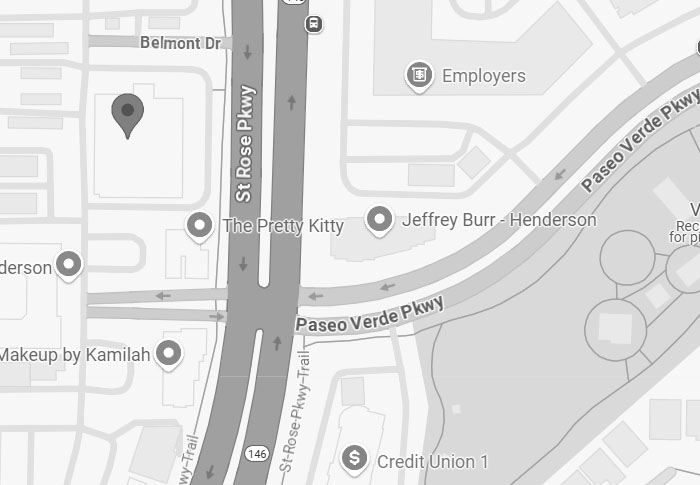Specialties

Percutaneous Hydrotomy

Ketamine Therapy

Percutaneous Hydrotomy
Discover a Revolutionary Approach to Beating Chronic Pain and Increasing Function.
Chronic pain and its associated conditions are some of the most common disruptors of enjoying life and can keep us from performing at our best. One possible answer to beating chronic pain and regaining more function is a little-known regenerative medicine procedure called “percutaneous hydrotomy.” Like other regenerative therapies that capitalize on the body’s innate ability to heal, percutaneous hydrotomy harnesses the body’s natural healing properties to improve function and reduce pain after injuries. The goal of percutaneous hydrotomy is to ultimately treat the root cause of the disease. By breaking the pain cycle and promoting natural healing, it addresses one of the biggest health issues—pain—and can help restore the body’s function using hidden regenerative medical techniques such as mesotherapy, oligotherapy, hypodermoclysis, and tumescent anesthesia.
What is Percutaneous Hydrotomy?
Percutaneous Hydrotomy is derived from a combination of disiplines of allopathic and alternative medicine practice that combine the following regenerative medicine techniques:
Mesotherapy
The administration of small quantities of drugs (vasodilators, anti inflammitory’s, chelation agents, amino-acids, vitamins) in a localized area.
Oligiotherapy
The action of using small doses of trace minerals (zinc, magnesium, copper, etc.) that are essential to various body functions at the cellular level.
Tumescent Anesthesia
The safe use of local anesthetics diluted in large quantitites of physiological saline.
Hypodermoclysis
The subcutaneous injection of fluids given safely in terms of hydration and for the slow dilute absorption of drugs.
Water
For it’s ability to diffuse and as a vehicle to deliver vitamins, minerals, and medications.
What types of conditions or injuries might benefit from percutaneous hydrotomy treatment?
The following are examples of conditions or injuries that percutaneous hydrotomy might help:
- Ankle arthritis, sprained or weak ankles, bunions, and other foot ailments
- Migraines, fatigue, sinus problems, vertigo, and TMJ
- Frozen shoulder, bursitis, tendinitis, and rotator cuff issues
- Back pain, knee pains, hip problems, and sciatica
- Osteoarthritis of the hands and feet
Is Percutaneous Hydrotomy a surgical procedure and is there any down time afterwards?
Percutaneous Hydrotomy is a safe non-surgical regenerative injection therapy that uses tiny mesotherapy-needles to employ all the techinuqes of percutanous hydrotomy to the skins superficial layer. Normally a Tumescent solution ( lidociane diluted in a physiologic saline) will be injected into the treatment area to accomplish local anesthia, and there is no need for general anesthia. Patients can normally return to normal activities within a few hours of treatment with minimal down time after a percutaneous hydrotomy procedure.
Are there any potential side effects associated with Percutaneous Hydrotomy procedures?
The side effects of percutaneous hydrotomy are rare and it has an excellent saftey history. All of percutaneous hydrotomy regenerative techniques involve the delivery of a solution using a needle, so aseptic technique is essential during treatment. Percutanous Hydrotomy protocols are designed to decrease the patients chance of having a painful experience.
Common Side Effects Can Include:
- Bruising
- Edema
- Skin Necrosis
- Bacterial Infections
- Allergic Reactions
- Skin Atrophy
- Granulomas
- Vagal Syndromes
- Pressure Over the Injection Area
(this is usally mild and temporary). - Injection Pain
(this is reduced by using istonic solutions)
What should someone expect after receiving a Percutaneous Hydrotomy treatment?
With chronic pain, it is common to observe an aggrevation of the symptoms after the first percutaneous hydrotomy treament. It often appears paradoxical, meaning you can see a “rebound effect” this is a positive sign and means the body is responding to treatment.The rebound effect will be less apparent with subsequent treatments and with each subsequent treatment be better tolerated. Healing is an inside job that takes time, chronic diseases are never resolved with a quick fix-they take years to develope, and it can take years to heal. Using percutaneous hydrotomy to balance the body’s biological terrain is a good first step since diseases develop as a result of a depleted biological terrain. Percutaneous hydrotomy should not be presented as a panacea to treat all chronic pain but rather a synergistic tool to be used with other therapuetic strategies to manage chronic conditions and improve overall functionality.
How can I learn more about Percutaneous Hydrotomy or schedule a consultation?
To learn more about Percutaneous Hydrotomy you can purchase Dr. Edwards book, Stopping Pain:Percutaneous Hydrotomy, A revolutionary approach to Beating Chronic Pian and Increasing Function.
Additionally, if you would like to schedule a consultation with Dr. Edwards please reach out to Elevate Medical Group to schedule a consultation.

Meet Elevate Medical Group’s medical director, Dr. Johnathan Edwards, who has over 20 years of surgical anesthesia experience and is the author of “Stopping Pain: Percutaneous Hydrotomy, A Revolutionary Approach to Beating Chronic Pain and Increasing Function.” Dr. Edwards was the first American physician to complete his formation in percutaneous hydrotomy with Dr. Guez of France and bring the technique to the United States. Dr. Edwards has trained many practitioners in the art and science of percutaneous hydrotomy and has performed the procedure on hundreds of patients, including elite athletes in various disciplines.
Stopping Pain: Percutaneous Hydrotomy, A Revolutionary Approach to Beating Chronic Pain and Increasing Function.

Ketamine Therapy
The Revolutionary Ketamine: The Safe Drug That Effectively Treats Depression and Prevents Suicide.
According to statistics from the World Health Organization (WHO) suicide ranks among the top causes of death globally. Depression is a major risk factor for suicide, with studies suggesting that a large percentage of those who die by suicide (over 50%) experienced depression or related mental health conditions.The typical main stay of treating depression has been traditional therapies: psychotherapy, cognitive behavorial therapy, interpersonal therapy, and anti-depressant medications. A less known but older anesthetic drug called ‘Ketamine” has proven to be a safe drug that can effectively treat depression and prevent suicide.
What does the clinical evidence say about Ketamine's use in the treatment of depression?
Ketamine’s path from a old war time anesthetic to anti-depressant orginated in the late 1990’s with groundbreaking proof-of-concept studies conducted in depressed patients who recieved relatively small doses of Ketamine. These patients experienced a rapid, unmistakable reduction in depressive symptoms after twenty-four hours, and the effect lasted days after treatment. To put these findings into perspective, traditional antidepressant medications take weeks to show any effect and must be taken daily. In the meantime, patients continue suffer from depression and risk self-harm and suicidal ideations. The same results have been replicated in subsequent studies, showing that a high percentage of depressed patients responded to a single treatment of sub-anesthetic dose of Ketamine. Ketamine has additonally demostrated it’s usefullness in a more complex form of depression called treatment-resistant depression (TRD).In other studies physicians showed that sub-anesthetic dose of Ketamine combined with cognitive behavioral therapy (CBT) improved symptoms of treatment resistant depression (TRD).
How does Ketamine work to treat depression and complex forms of treatment resistant depression?
Ketamine’s mechanism of action for treating depression,especially treatment-resistant depression (TRD), is unique because it sidesteps the usual pathways of traditional antidepressants.Unlike Serotonin Reuptake Inhibitors (SSRI’s) which affect Serotonin levels over a course of weeks,ketamine works fast-often within hours-by targeting the brain’s glutamate system and sparking rapid changes in neuronal connections.Glutamate’s the brain’s main excitatory nuerotransmitter that drives neuron activity. In depression,especially treatment resistant depression (TRD), there is evidence of malfunctioning glutamate signaling and weakend connections between neurons,particularily in the mood-regulating areas like the prefrontal cortex and hippocampus.By using ketamine to block NMDA receptors ( glutamate receptors) this causes a surge in the release of glutamate.The extra glutamate floats around and starts hitting other receptors, one being the AMPA receptor, which amps up neuron firing and sets off a process called synaptic plasticity-basically, the brain’s ability to rewire itself. In depression, synapses ( the connections between neurons) can atrophy or weaken.Ketamine flips this by boosting the release of brain-derived neurotrophic factor ( BDNF), a protein that acts like fertilizer for neuron growth and repair. Another downstream cascade that ketamine activates aside from (AMPA) and (BDNF) is the (mTOR) pathway, which is like a contruction crew for proteins that builds synaptic connections in the prefrontal cortex. This rapid rewiring is thought to “reset” the brain’s dysfunctional mood networks,explaining why people can feel better so fast. Ketamine also dials down inflammation and tweaks opiod receptors slightly to contribute to it’s mood lift and chills out the brain’s “default mode network” the part of the brain that gets stuck in negative rumination thought loops. In summary by ketamine’s ability to jumpstart glutamate,BDNF, and mTOR this offers a backdoor fix, rebuilding nueronal connections that tradtitonal SSRI antidepressant medications cant touch.
What other clinical treatment applications can Ketamine be used for?
Ketamine has also demonstrated it’s usefullness in treating other conditions besides depression including:
- Suicidal Ideation
Ketamine in known for it’s rapid effects on mood, and studies show it can help reduce sucidal ideations and negative thoughts quickly, often within hours to days. Ketamine improves how the brain processes information, particularily processing speed, which helps patients make better decesions and feel less overwhelmed by sucidial thoughts. - Addiction Treatment
Research suggests Ketamine may help treat addiction, particularly alcohol,opiod,and cocaine use disorders.It seems likely that Ketamine works by blocking NMDA receptors, promoting nueroplaciticity, and reducing cravings, which could support recovery. - Post Tramatic Stress Disorder (PTSD)
Research suggests that Ketamine can help treat PTSD by reducing fear responses and promoting brain plasticity. It seems likely that Ketamine works by blocking NMDA receptors, enhancing neuroplasticity, and lowering the amygdala repsonse. Evidence leans toward benefits when combined with pyschotherapy. - Nueropathic Pain
Research suggests that Ketamine may help treat nueropathic pain by blocking NMDA receptors, reducing central sensitization. It seems likely that Ketamine also enhances descending inhibitory pathways and has anti-inflammitory effects,contributing to pain relief. Evidence leans toward benefits for conditions like complex regional pain syndrome, with mixed results for other neuropathic pains. - Autism Spectrum Disorder
Research suggests Ketamine may help some indivduals with Autism Spectrum Disorder (ASD) by modulating NMDA receptors and promoting brain plasticity. It seems likely that Ketamine could improve symptoms like social interaction,communication,and repetitive behaviors.
How do I know if I would be a good candidate of Ketamine therapy?
-
Diagnosis of Treatment
Resitant Depression:The patient should have a confirmed diagnosis of major depressive disorder with a history of inadequate response to atleast two different classes of antidepressants. -
Severity of Symptoms
Patients with severe depressive symptoms,including those with signifcant suicidal ideation,may benefit from the rapid-acting effects of Ketamine. -
Lack of Response to Other Treatments
Candidates often have not achieved sufficient releif from other interventions, such as pyschotherapy,electroconvulsive therapy (ECT), or other pharmacological treatments. -
Absence of Contraindications
Patients should not have contraindications to Ketamine such as certain cardiovascular conditions, uncontrolled hypertension, or a history of substance abuse disorder,unless carefully managed.5. Ability to Adhere to Treatment Protocol: The patient should be able to comply with the treatment regimen,including attending regular infusions or nasal spray adminsitrations and follow up appointments. -
Support System
Having a supportive enviroment or network can be beneficial for monitoring and managing potential side effects and ensuring adherence to treatment.
These criteria help ensure that Ketamine treatment is both safe and potentially effective for the patient.
What are the possible side effects associated with Ketamine administration?
Ketamine administration is associated with several side effects, which can vary depending on the dose and route of administration.
Common Side Effects Include:
Dissociation: A sense of detachment from reality, often desrcibed as an “out-of-body” expereince.
Psychotomimetic Effects: Hallucinations, confusion, and delirium, which are more common at higher doses.
Cardiovascular Effects: Increased blood pressure and heart rate.
Neurological Effects: Dizziness,sedation,and headache.
Gastrointestinal Effects: Nausea and vomiting.
Sensory Effects: At higher doses or with chronic use, there can be urinary symptoms such as dysuria urgency.
Other Effects: Increased salivation and, in some cases anxiety.
Most of these side effects are transient,peaking within an hour of administration and typically resolving within a few hours.Serious adverse effects are rare when Ketamine is used in controlled,clinical settings.
How Ketamine is Admistered for Ketamine Therapy:

Intravenous (IV) Administration:
- Ketamine given in subanesthetic dose, usually 0.5mg/kg of patient body weight.
- Duration of the infusion is usually infused over 40-60 minutes.
- Protocol: Administered under medical supervision, in a controlled,supportive enviroment.
- Frequency: Treatments can be weekly or spread out and adjusted based on patient repsonse and tolerability, usually completing series of treatment sessions.

Intranasal
Administration:
- Formulation can be a commercial formulation ( Esketamine) a derivative of Ketamine or a specialized compounded formulation of Ketamine, which are used intranasally.
- Protocol: Administered under medical supervision, often in a clinic setting.
- Frequency: Typically twice a week for the first month, then weekly or biweekly based on repsonse.

Intramuscular (IM) Administrartion:
- Used less frequently but can be an option for some patients.
- Dosing Similar to IV, but specific protocols vary.

Supportive
Enviroment:
- Ketamine is often administered in a controlled,supportive enviroment, usually incorporating preparatory and integration sessions.

Monitoring:
- Patients are monitored for side effects, including dissociation and changes in blood pressure,during and after adminsitration.

Follow-Up
- Regular follow -up is essential to assess efficacy, adjust dosing, and manage any adverse effects.

Dr. Johnathan Edwards
Meet Elevate Medical Group’s medical director, Dr. Johnathan Edwards,he has over 20 years of experience in the field of anesthesiology, he has extensive experience on the use of ketamine in treating mental health. He published the book The Revolutionary Ketamine with famed author Gavin de Becker to show that more people need to know how ketamine can save lives.
Learn More About Ketamine Therapy
To learn more about Ketamine therapy you can purchase Dr. Edwards book, The Revolutionary Ketamine: The Safe Drug That Effectively Treats Depression and Prevents Suicide
Get in Touch
Address:
2470 St. Rose Parkway
Suite #114
Henderson, NV. 89074
Hours
Mon – Fri — 8:00am – 6:00pm
Saturday — Closed
Sunday — Closed

